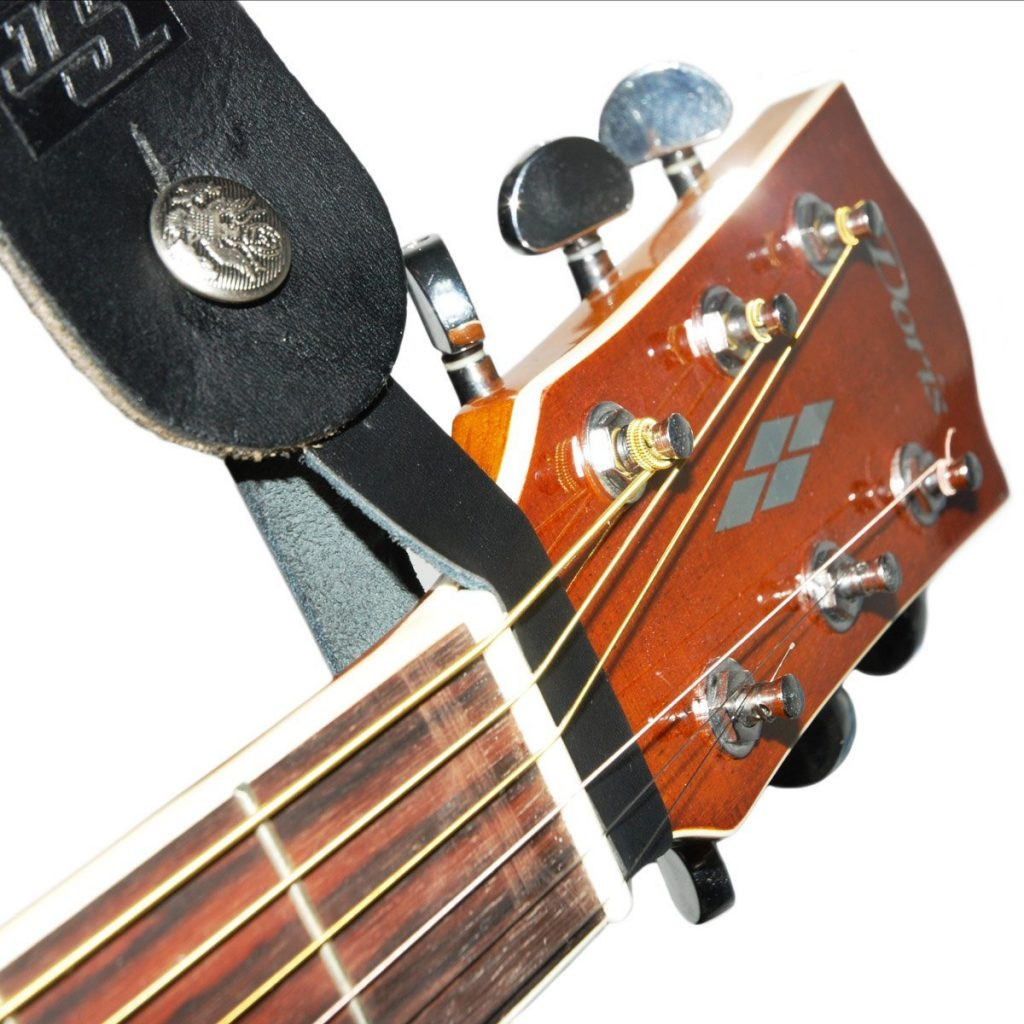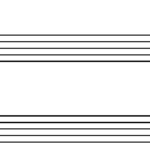Guitar straps are essential accessories for guitarists, allowing you to play comfortably while standing. If you’re new to playing the acoustic guitar, attaching a strap might seem a little confusing at first. This guide will clearly explain how to put a guitar strap on your acoustic guitar, ensuring you can play standing up with confidence.
Understanding Guitar Strap Buttons on Your Acoustic Guitar
Before we dive into the methods, it’s important to understand the buttons, or strap buttons, on your acoustic guitar. These are small, usually metal, knobs designed specifically for attaching your guitar strap. Most acoustic guitars will have at least one button, and some have two.
Typically, you’ll find one button at the bottom of the guitar body. Many acoustic guitars also have a second button located either at the base of the guitar’s neck heel, where the neck joins the body, or sometimes on the upper bout of the guitar body.
If your guitar has two buttons, attaching a strap is very straightforward. However, if your acoustic guitar only has one button, don’t worry! There’s still a simple way to attach your strap using a string.
Method 1: Attaching a Guitar Strap Using Two Buttons
If your acoustic guitar is equipped with two strap buttons, this is the easiest and most common method for attaching your guitar strap.
-
Locate the Buttons: Identify the two strap buttons on your acoustic guitar. One will be at the bottom of the guitar body, and the other will be near the neck heel or on the upper side of the body.
-
Prepare Your Strap: Take your guitar strap and find the two leather ends (or synthetic material ends) with buttonholes.
-
Attach to the Bottom Button: Take one end of your guitar strap and position the buttonhole over the bottom strap button of your guitar. You might need to apply a bit of pressure to push the strap end over the button. Ensure the strap is securely fastened and won’t easily slip off.
-
Attach to the Top Button: Take the other end of your guitar strap and repeat the process, attaching it to the second strap button located near the neck or on the upper bout. Again, make sure it’s securely attached.
Once both ends of your strap are attached to the buttons, gently test the security of the strap by lightly tugging on it. Your guitar should now be safely supported by the strap.
 Close-up of a guitar strap being attached to a button on the bottom of an acoustic guitar body.
Close-up of a guitar strap being attached to a button on the bottom of an acoustic guitar body.
Method 2: Attaching a Guitar Strap with One Button and a String
If your acoustic guitar only has a single strap button at the bottom, you’ll need to use a string to secure the other end of your guitar strap. This method is common for older acoustic guitars or those designed without a second button.
-
Gather Your Materials: You’ll need your guitar strap and a piece of sturdy string, shoelace, or even a thin rope. Paracord also works well.
-
Attach One End to the Button: Attach one end of your guitar strap to the strap button at the bottom of your acoustic guitar, just as you would in Method 1.
-
Prepare the String: Take your string and thread it through the buttonhole on the other end of your guitar strap.
-
Tie the String to the Headstock: Now, carefully thread the string underneath the guitar strings, just above the nut of the guitar (the white piece at the top of the fretboard). Bring the two ends of the string around the guitar neck, above the nut, and tie them securely in a knot. Make sure the knot is tight and the strap is held firmly.
It might take a few tries to get the string positioned correctly and tied tightly. Ensure the string is positioned underneath the guitar strings, not on top of them, as tying it on top can affect your guitar’s tuning and sound.
As an alternative to using a string, you can also consider using a specialized snap-on guitar strap attachment. These devices loop around the guitar headstock and provide a secure point to attach your strap, often making the process a bit easier and quicker.
 Detail of a guitar strap tied to the headstock of an acoustic guitar with a brown string, demonstrating an alternative attachment method for acoustic guitars with only one strap button.
Detail of a guitar strap tied to the headstock of an acoustic guitar with a brown string, demonstrating an alternative attachment method for acoustic guitars with only one strap button.
 A snap-on guitar strap attachment shown close-up, highlighting a convenient solution for easily attaching a guitar strap to an acoustic guitar.
A snap-on guitar strap attachment shown close-up, highlighting a convenient solution for easily attaching a guitar strap to an acoustic guitar.
Essential Tips for Using Your Guitar Strap
Once you’ve successfully attached your guitar strap, here are some important tips to keep in mind for comfortable and secure playing:
Practice Standing Up with Your Strap
If you plan to perform or play standing up, it’s crucial to practice while standing. Playing while standing is different from sitting, and it’s important to get used to the balance and posture. Using a strap during practice will help you adapt and improve your playing while standing.
Always Test Your Strap’s Security
Before each playing session, especially if you’re moving around, take a moment to test your guitar strap. Gently tug on both ends where they connect to the guitar to ensure they are securely fastened. This simple check can prevent accidental slips and protect your guitar from falls. For extra security, consider using locking guitar straps, which offer a more secure connection to the strap buttons.
Find the Right Strap Length for Comfort
Experiment with different strap lengths to find what’s most comfortable for you. The ideal strap length is a personal preference. A common starting point is to adjust the strap so that your guitar hangs around your waist level or slightly higher. Adjust the length until the guitar sits at a height that allows you to play comfortably without straining your wrist or shoulder. Don’t be afraid to adjust it higher or lower to see what feels best for your playing style, whether you are strumming chords or playing intricate fingerstyle pieces.
Consider Different Types of Guitar Straps
Guitar straps come in various materials, widths, and styles. Experiment with different types to find what you prefer. Wider straps can distribute the weight of heavier guitars more comfortably. Some straps are made of padded materials for extra comfort, while others are made of materials like leather, nylon, or cotton, each offering a different feel and aesthetic. Having a few different straps can also be a way to personalize your guitar and playing experience.
Conclusion
Attaching a guitar strap to your acoustic guitar is a simple process once you understand the basic methods. Whether your guitar has one or two strap buttons, you can easily and safely secure your strap using these techniques. Remember to always test your strap’s security, find your ideal playing length, and practice standing up. With your guitar strap properly attached, you’re ready to enjoy playing your acoustic guitar standing up with comfort and confidence.

